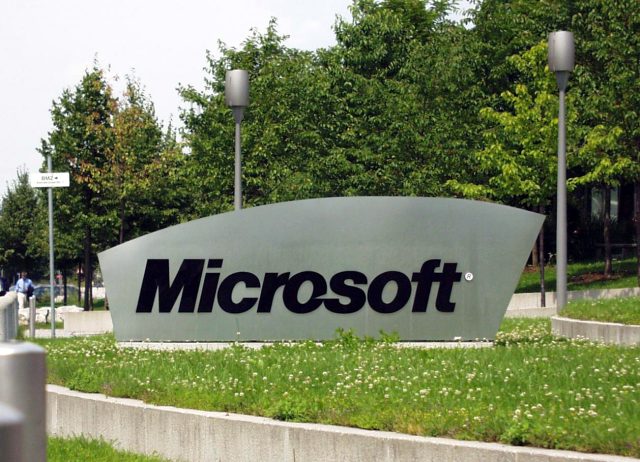
NEW YORK—In a move to curtail Google's growing presence in the education market, Microsoft has announced a new Windows variant: Windows 10 S.
Previously rumored as "Windows 10 Cloud," the new Windows variant is defined by one specific design decision: it can only run and install applications that are obtained through the Windows Store. Both applications built using Microsoft's new Universal Windows Program (UWP) framework, and traditional Win32 applications ported to the Store using the Desktop Bridge (formerly known as "Project Centennial") will be permitted, but Win32 applications that use their own installers will not function.
The S does not stand for anything officially, but it might reasonably be read as implying "school" or perhaps even "store."
The ability to restrict Windows 10 to only allow Store applications was added as part of the recently released Creators Update. In Windows 10 Home, Pro, and Enterprise, the setting can be freely toggled by end users (or system administrators) to allow (the default) or disallow non-Store applications. The new S version uses this same capability to prohibit non-Store software.
The Store lockdown is intended to give machines more consistent performance, battery life, and security. UWP store applications are run in tightly controlled sandboxes, and Windows can suspend or even terminate applications to reduce the usage of memory, processor, and battery resources. Centennial applications are much less constrained but are still precluded from installing things like background services and other programs that run automatically, without user intervention. Both UWP and Win32 Store applications use a single mechanism for automatic updates, too, simplifying patching and similar maintenance.
The expected usage model is not necessarily one of individual ownership. While some schools do indeed equip each student with their own computer, many treat them as shared resources. At the start of each class, students will pick up a laptop from the pile, log in, and then return it to the pile for the next student at the end of the class. This multiuser situation makes security arguably more important than that for privately owned machines. A multiuser setup also requires work to ensure that actions such as the first login to a machine are fast.
Systems used this way also need to offer a full school day's worth of battery life. The constraints on Store applications (and especially UWP applications) should help achieve this, and the next major Windows update, due in autumn and codenamed "Redstone 3," is going to take further steps to limit the resource consumption of background applications.
Just as Chrome OS systems can be managed by Google's cloud-based device management, Windows 10 S machines will support Intune, Microsoft's cloud-based device management system.
If the Store constraint proves too onerous, Windows 10 S can be upgraded to Windows 10 Pro. Educational establishments will be able to do this for free; everyone else will have to spend $50. Microsoft will, we believe, also continue to offer Windows 10 Education for institutions with suitable volume license agreements; this version is equivalent to Windows 10 Enterprise but is only available to qualifying organizations. The upgrade pricing makes the positioning of Windows 10 S a little peculiar. Upgrading from Windows 10 Home—which can run any Win32 application, but which doesn't support Intune remote management—to Pro costs $100.
While Microsoft is positioning Windows 10 S first and foremost as a product for the education sector, it says that it does not view the version as an exclusively low-end version of Windows and expects that it will also be available on systems with mainstream consumer availability. While Google is clearly the primary target of Windows 10 S, the same locked-down environment may well make it a good fit for anyone seeking a low maintenance Windows machine.
This is, of course, not Microsoft's first attempt to create this kind of restrictive environment. Windows RT, the version of Windows 8 that ran on ARM processors, was similarly restricted to Store apps. The lack of such apps, however, represented a major stumbling block; there just weren't enough Store apps, and those that existed were often of low quality. Moreover, there was no good way for developers to migrate existing software into the store, even if they wanted to; apps had to be rebuilt from the ground up using the predecessor to UWP.
The Windows 10 Store has a few more applications than the Windows 8 Store did, but there's nonetheless a big software gap. Many Win32 applications have no good UWP equivalent. Centennial is intended as the solution to this problem: it enables Win32 apps to be sold through the Store and for piecemeal migration from Win32 to UWP. However, there are still relatively few Centennial applications available. Although the Store is in many ways an appealing distribution channel—if nothing else, it guarantees clean software installation and uninstallation, and update model is much more convenient than having to update every piece of software individually—application developers have done little to embrace it, and similarly, Windows users do not seem particularly interested in acquiring their software through the Store.
If Windows 10 S should see any significant amount of uptake, it might provide the incentive that developers need to support the Store. It's already had this effect on one developer: Microsoft. Office 2016 will be sold through the Windows Store. Microsoft will no doubt be positioning this ability to run the full Office suite as a key advantage over Chrome OS, but it's also something of an endorsement of Centennial: if it's good enough for something as large and complex as Office, it should also be good enough for a wide range of other Windows applications.
New Windows 10 education PCs will be coming out soon from partners including Asus, Samsung, Dell, and HP, starting at $189. All new Windows 10 education PCs will get a free one-year subscription to Minecraft: Education Edition, too. All schools currently running Windows 10 Pro can receive a free update to Windows 10 S as well.
reader comments
126